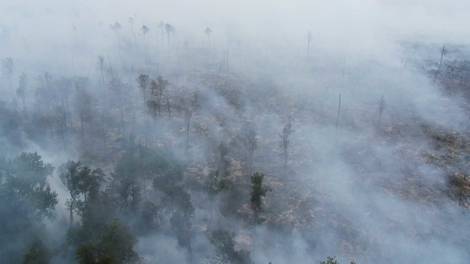
Special Issue
CRASE
Bright Future or Cautionary Tale? How the Bay Area Shapes the Future of the U.S.
Breathing Dangerously

I look out my window to assess the weather conditions. It’s not orange or hazy like the previous weeks, but then again, I’ve learned that poor air quality can be invisible. I decide to check the air quality index website—my seventh time today—and see that the conditions are still “unhealthy”—the new normal in the San Francisco Bay Area. I spent close to 50 days indoors this past summer—a time of year that used to be my favorite for hiking or swimming outdoors. Instead, I was stuck inside with humming air purifiers, obsessively reading about the containment percentages of the surrounding wildfires, with the occasional break to briskly check the mail with my N95 mask secured on my face. Indeed, 2018 was a challenging year for people who suffer from respiratory conditions such as asthma, emphysema, or in my case, a rare and serious disease called idiopathic follicular bronchiolitis.
The past year marked new a new record in California wildfires: 8,527 fires burning an area of 1,893,913 acres, causing more than $3.5 billion in damages, according to the California Department of Forestry and Fire Protection. Thousands of people lost their homes and livelihoods; hundreds have been killed. But the effects of the fires actually impact everyone. The sheer number of fires in multiple locations means that the smoke particles are advancing into more areas—spurring “spare the air days” and public health warnings. The fine air particles make their way into cars, office buildings and homes, through air vents, and onto people’s clothes.
Air pollution from wildfires is more dangerous than your typical summertime pollution resulting from ozone increases emitted from automobiles, refineries, and industrial plants. Rather, the threat emerges from undetectable, toxic particulates in the air that are unknowingly and effortlessly inhaled and journey deep into the lungs. It is clear this is a major concern for those suffering with respiratory illnesses, but we are still learning what the risks are for healthy people who breathe in this air for prolonged periods. With the number of unhealthy air days increasing each year across the state, and especially in the Bay Area, we are realizing that we are silently living in hazardous conditions.
The fall out from cumulative disasters creep up on you slowly, and our focus on this-or-that crisis begins to coalesce into a new realization: the grave consequences of climate change. Around the world, there are increasing numbers of destructive hurricanes, floods, and tsunamis. And for California, it is wildfires, caused by dry conditions and rising temperatures. Environmentalists, climatologists, politicians, and health professionals (among many others) are advocating for significant shifts in how we live and function in order to improve our air quality, but we are far from addressing these very real threats to our health.
Some researchers believe that air pollution is the world’s most serious environmental health risk, a sober problem exacerbated by climate change. But to be sure, California air quality is also impacted not only by major wildfires but also by many factors—like the 2,000 new chemicals being introduced into the air each year from industries promoting their scented everyday products: from holiday candles, air fresheners, cleaners, and essential-oil diffusers to new so-called natural beauty lines that are secretly fragranced by hazardous chemicals. Moreover, with the growth of flavored e-cigarettes—there is a new breed of ultrafine toxic (and cancer causing) particles that we are inhaling, directly and passively. The irony of these new chemicals is their assumed ability to make us more beautiful, cooler, and yes, healthier.
Having a life-threatening lung disease has been simultaneously heartbreaking as well as eye-opening. I now notice things that I have previously been oblivious to, like slight traces of a smoky campfire smell in the air, even when the actual fire is a hundred miles away. I pay attention to wind patterns and high-pressure systems to assess the direction the air particles will travel. I investigate places to live one day based on their wildfire risk and levels of humidity. Perhaps the greatest threat to Bay Area air quality is that most of the danger is invisible to the naked eye and unrecognizable to those with healthy lungs. We assume we are all right.
Historically in the Bay Area, the most vulnerable communities are often the ones serving as a wake-up call to the uninformed. My health experience is only a precursor for what will happen to many, to most, Californians. However, warnings remain unheeded so long as those at risk are continued to be dismissed as weak, odd, or a less-than-human “other.” Serious measures need to be taken not only to head off disastrous global warming but also to deal with the immediate and long-term health risks associated with air pollution. There is a hidden danger looming in our air and the San Francisco Bay Area is in a unique position to warn others and lead the charge that we can no longer deny how nature, and our own ignorance and consumption, is killing us.
 Christine Yeh is Professor of Counseling Psychology at the University of San Francisco School of Education. She writes about communities who experience marginalization, invisibility, and othering and opportunities for empowerment and voice. Her commentary, "Forget Grit: Focus on Inequality,"" was published in Education Week.
Christine Yeh is Professor of Counseling Psychology at the University of San Francisco School of Education. She writes about communities who experience marginalization, invisibility, and othering and opportunities for empowerment and voice. Her commentary, "Forget Grit: Focus on Inequality,"" was published in Education Week.